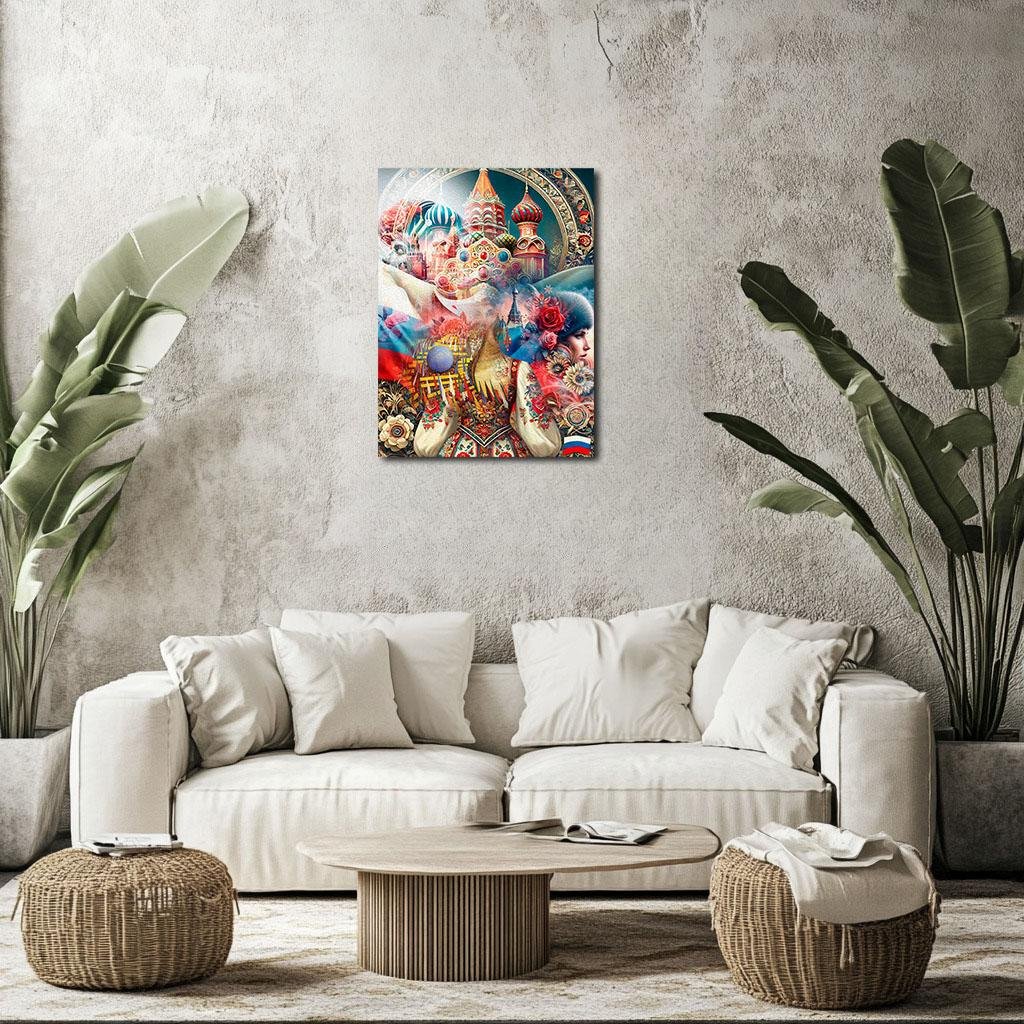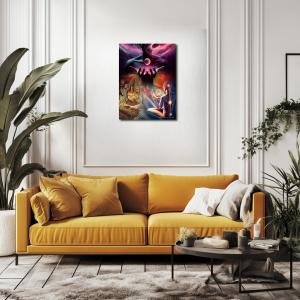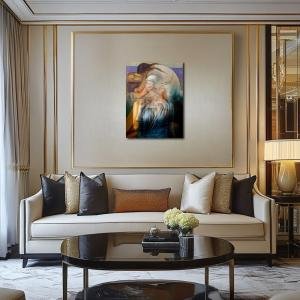The Procession Beneath the Onion Domes: A Celebration of Power and Petals
The Procession Beneath the Onion Domes reimagines Diego Rivera’s May Day Procession in Moscow as a vibrant, symbolic fusion of Soviet ritual, Russian heritage, and feminine mythology. A central figure in regal traditional dress anchors the composition, her crown transforming into the domes of Saint Basil’s. Ornate crowds, red banners, and golden emblems stream below, while floral patterns, historical echoes, and faces of past and present float across the canvas. Through rich reds, regal golds, and solemn blues, the piece honors identity as both celebration and resistance, turning a political procession into an ornate portrait of legacy.
Please see Below for Details…
Hotline Order:
Mon - Fri: 07AM - 06PM
404-872-4663
This reinterpretation of Diego Rivera’s May Day Procession in Moscow is an ornate and symbolic tableau titled The Procession Beneath the Onion Domes , merging revolutionary pageantry with the timeless grace of Russian heritage and female mystique. While Rivera’s original work captured the vigor of May Day demonstrations in early Soviet Russia, this piece shifts the emphasis from mass ideology to personal identity, from collective uniformity to ornamental defiance. The image unfolds as a surreal celebration of color, femininity, empire, and the paradoxes of pride.
At the core of the piece stands a richly adorned woman, her back turned, arms raised as though invoking a spell of preservation and memory. Draped in a traditional Russian embroidered dress, her figure becomes the living bridge between architecture and ancestry. Her kokoshnik—a crown of imperial jewels and intricate beadwork—rises into the sky and transforms into the domes of Saint Basil’s Cathedral. These iconic towers are not simply background—they grow from her mind like thoughts crystallized in form. In this symbolic act, architecture becomes memory, and memory becomes flesh.
To the left, a pale figure with closed eyes represents the Soviet ghost—an ethereal echo of unity, painted in faded whites and blush. She is part of the crowd yet lost to time, absorbed into the ceremonial fog. To the right, a modern Slavic woman, crowned with blue-gray fur, roses, and embroidery, stares forward with knowing distance. She holds the gaze for the viewer—composed, unshaken, regal. The Russia she embodies is not Rivera’s, nor Lenin’s. It is mythic, multi-layered, feminine, and defiant.
Beneath the central figure, a massive procession of red banners and golden slogans spills through Red Square like a tide of historical fervor. Their geometry contrasts sharply with the floral swirls above, emphasizing the duality of structure and spirit. The crowd is not individually rendered but rather represented in ornate, patterned motion—part celebration, part compulsion. Above them, ethereal symbols—the Eiffel Tower, faded Kremlin silhouettes—appear like historical flashbacks drifting through fog.
Color in this piece is not decorative—it is narrative. The primary hue is red, but not monolithic. Here, red wears many masks: the crimson of revolution, the scarlet of roses, the burnished tones of history. The reds flow through the fabric, domes, and sky, representing sacrifice, sensuality, and spectacle. It is the color of banners and blood, both celebratory and cautionary. It carries the echo of triumph and the whisper of loss.
Gold appears throughout, especially in the kokoshnik and cathedral halos. These shimmering tones are not meant to dazzle alone but to evoke legacy. They suggest the wealth of memory, the power of iconography, and the illusion of permanence. Gold in this piece is layered with history—it gleams, but also traps.
The blues serve as moments of cool reflection—on the fur collar, the shadows of St. Basil’s, and the twilight beyond the parade. They symbolize stillness amidst movement, thought within celebration. They are the hue of winter and introspection, offering a reprieve from the overwhelming warmth of the palette.
White is used sparingly and reverently—around the floral patterns, in the fading faces, and in the arching smoke that weaves through the piece like incense. White is not purity. It is space—between past and present, between the real and the remembered.
When I created The Procession Beneath the Onion Domes , I did not aim to revise Rivera’s socialist celebration. Instead, I sought to overlay it with layers of identity—personal, national, mythical. This is not merely a May Day parade; it is a meditation on how nations wear costumes of belief. In this vision, the female figure is not the observer. She is the conductor of memory. Her body, her dress, her posture—they are the altar through which celebration is transfigured into ceremony, and ceremony into symbol.
This piece asks: when revolution becomes ritual, what remains of belief? What do we inherit from pageants of power—hope, fatigue, or something unspoken and embroidered into the fabric of our mothers’ clothes?
Add your review
Your email address will not be published. Required fields are marked *
Please login to write review!
Looks like there are no reviews yet.








